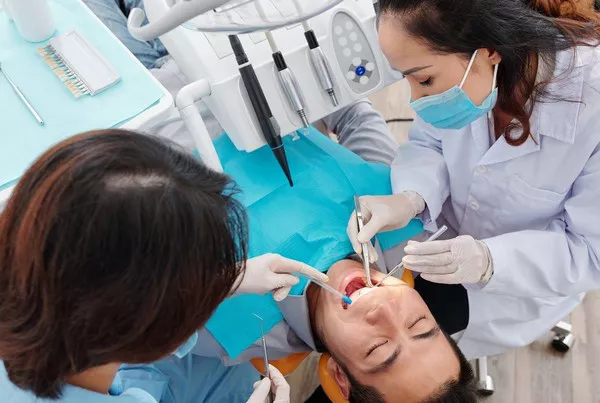Dental implants are a popular and effective solution for people with missing teeth. They provide a natural-looking and permanent replacement for lost or damaged teeth. However, tobacco stains can be a problem for those who smoke or use other tobacco products. These stains can cause discoloration and affect the appearance of your dental implants.
In this article, we will discuss how to remove tobacco stains from dental implants. We will cover several subtopics, including the causes of tobacco stains, prevention techniques, and treatment options.
Causes of Tobacco Stains:
Tobacco stains can be caused by smoking cigarettes, cigars, pipes, and using chewing tobacco. The nicotine and tar in these products can accumulate on the surface of your dental implants, causing yellow or brown discoloration.
Prevention Techniques:
The most effective way to prevent tobacco stains is to quit smoking or using tobacco products. However, if you are not ready to quit, there are still steps you can take to reduce the risk of stains on your dental implants.
- Brushing and Flossing: Regular brushing and flossing can help remove surface stains and prevent further discoloration. Use a soft-bristled toothbrush and non-abrasive toothpaste to avoid damaging your dental implants. Flossing between your implants can help remove any debris and prevent plaque buildup.
- Professional Cleaning: Regular visits to your dentist for professional cleaning can help remove surface stains and keep your dental implants looking their best. Your dentist can use special tools to clean hard-to-reach areas and remove any buildup of plaque and tartar.
- Avoid Staining Foods and Drinks: Certain foods and drinks, such as coffee, tea, red wine, and dark-colored berries, can stain your dental implants. Limit your consumption of these items or rinse your mouth with water after consuming them to reduce the risk of staining.
Treatment Options:
If you already have tobacco stains on your dental implants, there are several treatment options available to help remove them.
- Professional Teeth Whitening:
Your dentist can perform a professional teeth whitening procedure to remove surface stains and improve the appearance of your dental implants. This treatment uses a bleaching agent to lighten the color of your teeth. However, it may not be effective for deep stains.
- Polishing:
Polishing your dental implants can help remove surface stains and restore their natural shine. Your dentist can use a special polishing tool to buff away any discoloration and smooth the surface of your implants.
- Replacement:
In some cases, if the tobacco stains are too severe and cannot be removed by other methods, your dentist may recommend replacing the affected implant with a new one. This is usually a last resort option, as it can be costly and time-consuming.
- At-Home Whitening Products:
There are various at-home whitening products available that can help remove surface stains on your dental implants. These products include whitening toothpaste, strips, and gels that contain bleaching agents like hydrogen peroxide or carbamide peroxide. However, it’s important to use these products as directed and avoid overuse, which can damage the enamel of your dental implants.
- Laser Teeth Whitening:
Laser teeth whitening is a newer and more advanced whitening technique that uses laser energy to activate a whitening gel applied to your teeth and implants. This method can be highly effective in removing deep tobacco stains and leaving your dental implants looking brighter and whiter. However, it can also be more expensive than other methods and may only be available through specialized dental clinics.
- Composite Bonding:
If you have severe tobacco stains on your dental implants, composite bonding may be an option. This involves applying a tooth-colored resin material to the surface of your implant to cover up the stains and improve the appearance of your smile. This method can be cost-effective and relatively non-invasive, but it may not provide long-lasting results.
- Porcelain Veneers:
Porcelain veneers are thin shells placed over the surface of your dental implants to cover up stains and improve their appearance. They are custom-made to match the color and shape of your natural teeth, and they can provide a long-lasting and durable solution for severe discoloration. However, this method can be more costly than other options and may require multiple appointments to complete.
Conclusion:
Overall, there are several treatment options available to help eliminate tobacco stains from your dental implants. The best option for you will depend on the severity of your staining, your budget, and your personal preferences. It’s important to discuss your options with your dentist and make an informed decision based on your individual situation. By taking steps to prevent staining and seeking treatment when necessary, you can keep your dental implants looking their best for years to come.
Related Topics:










![Cosmetic Dentistry Market Size, Share | Global Report [2032]](https://www.padmel.com/wp-content/uploads/2025/04/Cosmetic-Dentistry-Market-Size-Share-350x250.webp)





















